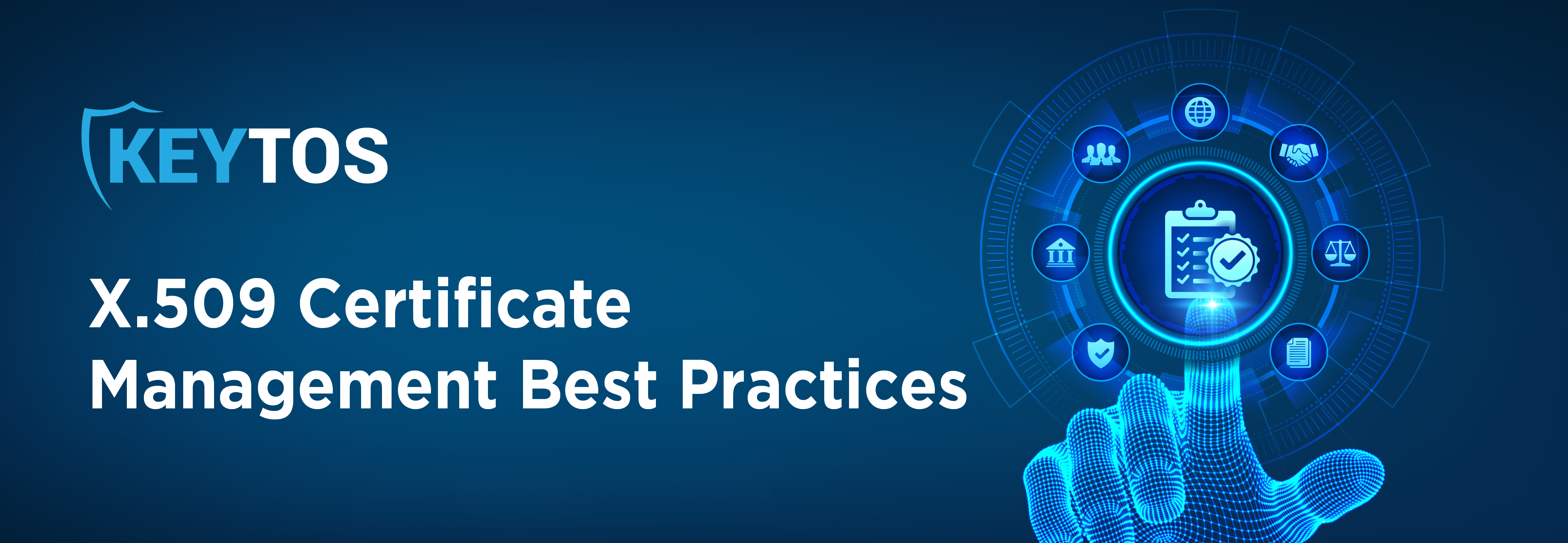
How to Best Secure X509 Certificates
X.509 Certificate Management Best Practices
X.509 certificates play a crucial role in securing online communications. Check out our blog explaining what X.509 certificates are to learn more about what constitutes an X.509 certificate. For now, though, let’s take a look at the best X.509 certificate management best practices so that you and your organization can get a better idea of how to effectively manage them.
1) Certificate Lifecycle Automation
Long gone are the days of organizations only having to deal with a few certificates here and there – today, companies can have a massive range of certificates (try 50-100,000). This means that manually rotating certificates is a behemoth task. Why make employees waste their time and expertise on a task that can be automated faster than you can say, “X.509”? Certificate lifecycle automation is the way of the future – we highly recommend getting on the bandwagon sooner rather than later.
2) Rotate any Non-Hardware Protected Certificates Every Month
A non-hardware protected certificate is a certificate that does not have its private key protected by an HSM. Due to this lack of protection, non-hardware protected certificates are the least secure certificates you can have; as such, it is vital that you rotate them every 30 days. By doing this, you allow your organization to have the best chance to stave off getting compromised.
3) Rotate any Human Certificates Every 1-2 Years
Human certificates apply to companies employing hardware keys or smartcards; since rotation of these certificates require human input, it is ok to wait up to 1-2 years before you need to rotate them, but we recommend no longer than that.
When push comes to shove, you don’t want your certificate revocation list to get too large – let’s say you rotate human certificates every 2 years, but your average employee tenure is 1 year. In that scenario, half of your certificates are being revoked, thus creating a massive CRL that services will need to download every single time. No one wants that.
4) Have Set Policies and Procedures
It is absolutely vital that your organization has crystal clear policies in place regarding the issuance, renewal, revocation and storage of certificates. Education is the best way to avoid mishaps, so by clearly defining policies and procedures around certificates, you can best prepare your organization for both how to properly handle certificates and how to handle it when something inevitably goes awry (the best laid plans of mice and men…).
5) Use Crypto-Agility and Automation to Become Scalable
As your organization adapts and advances, so too should its ability to manage certificates. Your certificate management needs to be able to accommodate increases in applications, users and transactions.
By following these best practices and incorporating them into your X.509 certificate management protocol, you can decrease the vulnerability of your certificates and increase the security of your digital communications.
We understand that implementing these best practices can be a gargantuan task – that’s why Keytos is here to help! Check out our certificate management tool and our SSL monitoring tool, and schedule a FREE PKI assessment with one of our experts today!


